Abstract: A bright fireball entered the Earth’s atmosphere in the south-east skies of Guelmim, Morocco, on Friday December, 10th, 2021 at 18h45m UT. Its interaction with the atmosphere led to brilliant light flashes accompanied with detonations. A large number of fragments survived the fireball phenomena. The Saharian living in the surrounding region then gather together searching for debris of this extraterrestrial rock. The first fragment has been discovered the next day. About a hundred people came to the region of Tiglit (Tata, Morocco) and thousands of fragments have been collected by the nomads, traders and hunters with some knowledge about extraterrestrial rocks. The members of the University Museum of Meteorites association found a block of 3 grams in the region, contacted Prof. Ibhi Abderrahmane, scientist and collector of meteorites at the Ibn Zohr University, in order to inform him about the findings of freshly fallen meteorites.
Introduction
Morocco is one of the most important countries in the world when it comes to meteorite falls, according to the “Meteorite Nomenclature Committee of the Meteoritical Society”, 22 meteorite falls have been recorded. Southern Morocco is world famous for its meteorites. More than half of the scientific publications on extraterrestrial rocks worldwide are about Moroccan meteorites (Ibhi, 2013). The supervision on meteorite falls is essentially provided by nomads living and crossing the Moroccan desert all year round. These people form a real network of human cameras (Ibhi, 2014). Anyway, the Tiglit meteorite of the Guelmim region is added to the list of meteorite falls in Morocco.
On the evening of December 10th, 2021 around 19h45m Moroccan time (GMT+1,) a bright bolide was observed by thousands of eyewitnesses in an area about 140 km in distance from the South-East of the Guelmim town (South-East Morocco). A terminal fragmentation and sound phenomena were perceived near the end point of the trajectory. The bolide has traveled from North West to South East and has experienced several fragmentations along its atmospheric trajectory (Figure 1). This extraordinary and rare event is extremely valuable to the scientific community.
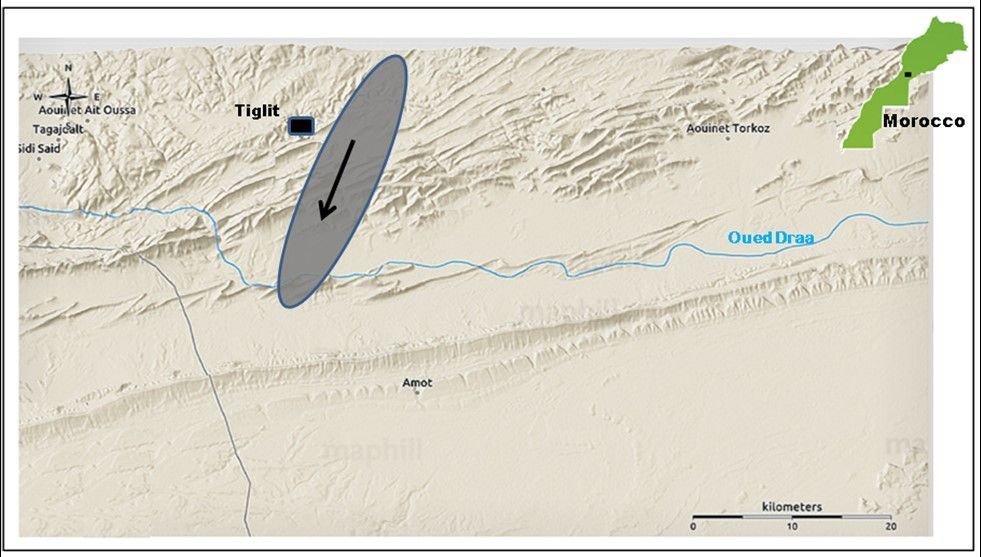
Figure 1 – Estimated flight path of the fireball that gave rise to the Tiglit meteorite.
Collecting informations
Eyewitnesses in several locations saw the bright fireball and heard audible of three detonations a few seconds later. Mr. Dair Ahmed a friend of the University Museum of meteorites and a resident of the Tiglit region, has testified that he and his friends saw a brilliant light across the sky. It seemed to be brighter than an electric welding light. Mr. Bachikh Mouloud, reported that the light was green before it splitted into three parts.
The following day, hundreds of people from surrounding Douars, villages and collectors of meteorite fragments from other cities (Guelmim, Laayoune, Es Smara, Aouinat Torkoz, etc.) moved to the site to search for the precious meteorites (Figure 2). The first fragments were found at 14 km from Tiglit village (28°23.533’ N, 10°22.632’ W). Most of the specimens found were quickly identified as meteorites because it exhibits a prominent fusion crust that covers a part of their surface. The majority of these fragments are relatively small pieces (Figure 3), with the largest officially reported weighing 1 kg at the time of this publication.
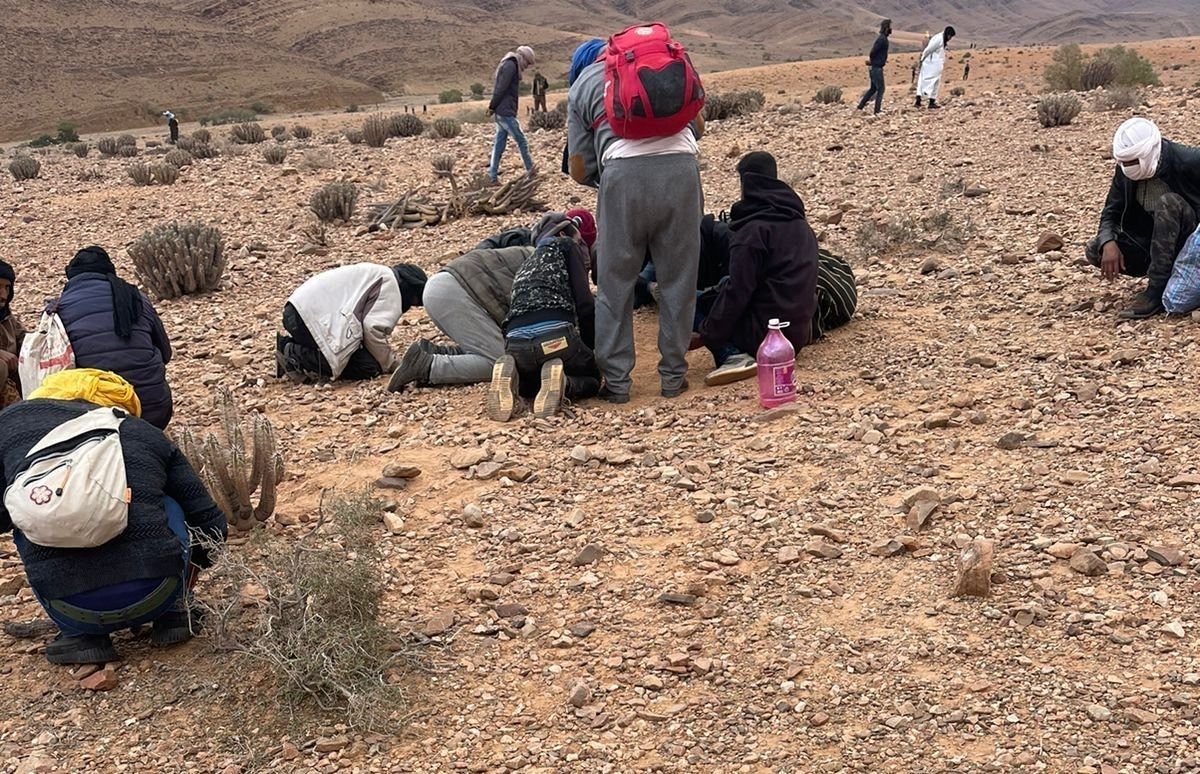

Figure 2 – The location where the first fragments were found near the rural municipality of Tiglit.
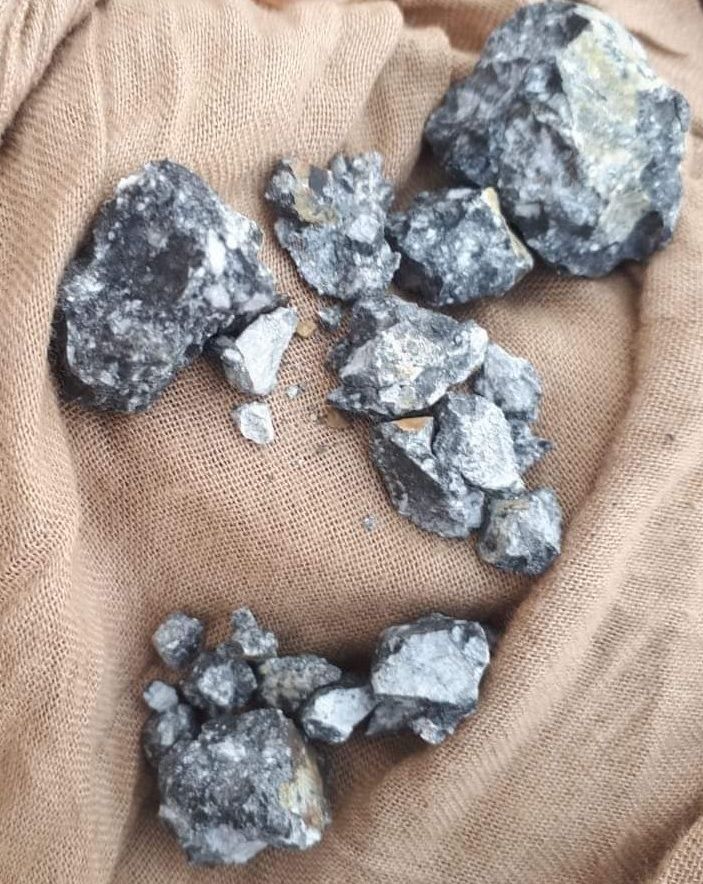
Figure 3 – Tiglit meteorite fall fragments.
Preliminary petrography
After receiving a sample (which was approximately 25 mm in diameter and about 10 mm thick with a weight of 3.5 grams) at the University Museum of Meteorite, preliminary analyzes were archived in the Scientific Research Center of Agadir (Figure 4) and showed that the Tiglit meteorite is a light-colored magmatic rock with a brownish fusion crust, mainly composed of large white crystals (Orthopyroxene) with some olivine crystals, iron-nickel alloy and a multitude of rare accessory minerals. The strongly brecciated texture reveals a violent history of its original body. Petrological and mineralogical features of the Tiglite meteorite were studied by electron microscopy (SEM) at the Scientific Research Center of the Faculty of Sciences of Agadir (Ibn Zohr University). Indeed, BSE imaging and petrographic examination were carried out using the JEOL JSM IT1000 scanning electron microscope which has just been assigned to the Faculty of Sciences of Agadir. The measurements were performed with a resolution of 4 nm at 20 kV. The engine is equipped with Energy-Dispersive Spectroscopy (EDS) detectors for qualitative/quantitative elemental analysis. Before analysis, the samples were submitted to a gold metallization process by JEOL JFC_1300 auto fine coater during 15 seconds, in order to eliminate the non-conductive sample charge accumulated during the analysis.
The Tiglit is a monomict breccia consisting of coarse-grained enstatite fragments, up to 5 mm, with a fine-grained matrix. Such structure is typical for common aubrites. The matrix consists of enstatite (Opx) with diopside (Cpx), olivine, glass and opaque minerals (Figure 5). Phases in the matrix are usually small in size (below 100 µm). Enstatite is almost homogeneous in composition (very rich in magnesium and poor in iron). Olivine is pure forsterite (very poor in iron) and clinopyrxene is a diopside. Minor metal, high in Ni and associated with troilite. Based on these data, it can be confirmed that this rock can be classified as an achondrite meteorite of the “Aubrite” type and not as a lunar feldspathic regolith breccia meteorite advanced by merchants.
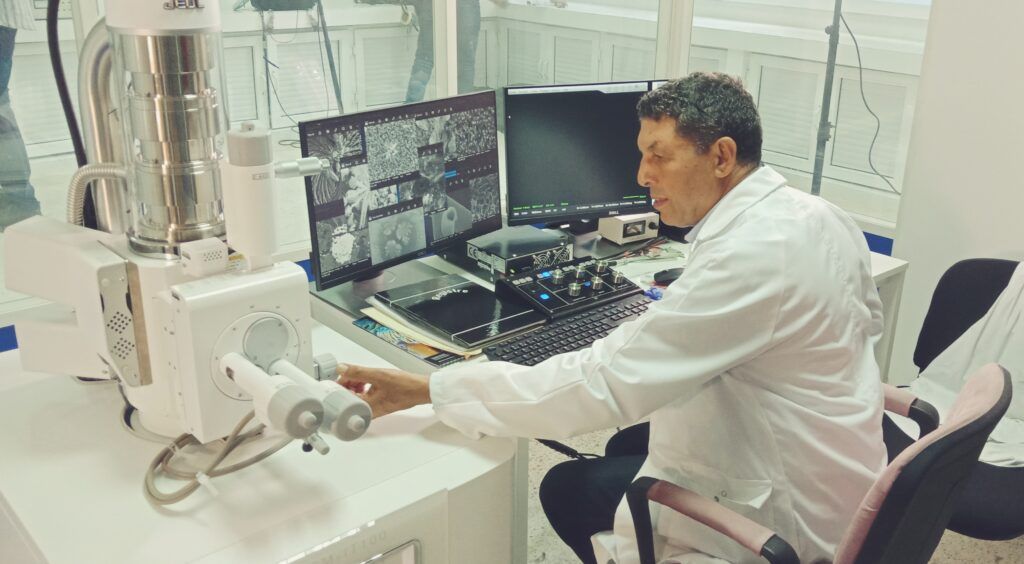
Figure 4 – Observation and analysis of the Tiglit fragment performed at the University Museum of Meteorites.
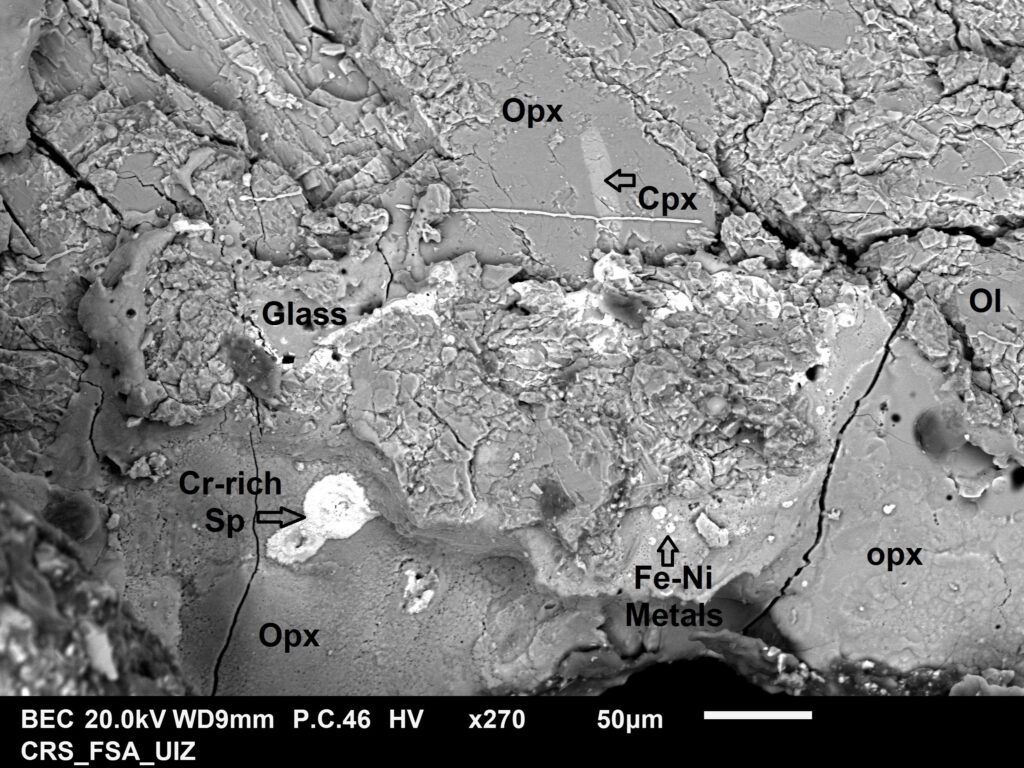
Figure 5 – Backscattered electron images, consisting of coarse-grained Enstatite (Opx), olivine (Ol) and pyroxene (Cpx) with interstitial materials Fe-Ni metals, Cr riche spinel and glass. (Photo mum).
Conclusion
Meteorite “falls”, are meteorites collected after their fall from space while being observed by people or automated devices. More than twenty-two meteorite falls (all types combined) were observed and were picked up on Moroccan territory. Concerning the Aubrites, the Tiglit meteorite is the first observed fall which will bear the name of the village where it has landed. However, 6 finds were collected in Morocco (one in 2005, two in 2006, two in 2007 and one in 2019, and all of these rocks bear the name NWA). These falls and finds are golden sources of knowledge, these rocks from elsewhere contain precious information about the conditions of the formation of the solar system 4.5 billion years ago (Khiri and Ibhi, 2015), on the genesis of the planets and their internal composition.
The Tiglit meteorite fetched exorbitant prices, traded as a lunar meteorite. Analyzes carried out by the University Museum of Meteorites confirm that this is an Aubrite-type celestial rock of asteroidal origin.
Acknowledgments
We are very grateful to Mr. Bachikh Mouloud, Mr. Dair Ahmed (Tafraout) and Mr. Lamghari Ali for their help in collecting all information and Mr. Lakhrouf Omar for his help in getting a sample.
References
Ibhi A. (2013). “New Mars meteorite fall in Morocco: final strewn field”. International Letters of Chemistry, Physics and Astronomy, 11, 20–25.
Ibhi A. (2014). “Tighert: A new Eucrite meteorite fall from Morocco”. In, J. L. Rault and P. Roggemans, editors, Proceedings of the International Meteor conference, held on 18-21 September 2014 at Giron, France. Pages 173–175.
Khiri F. and Ibhi A. (2015). “African meteorites falls: some statistics”. European Planetary Science Congress (EPSC), 10, # 80.






